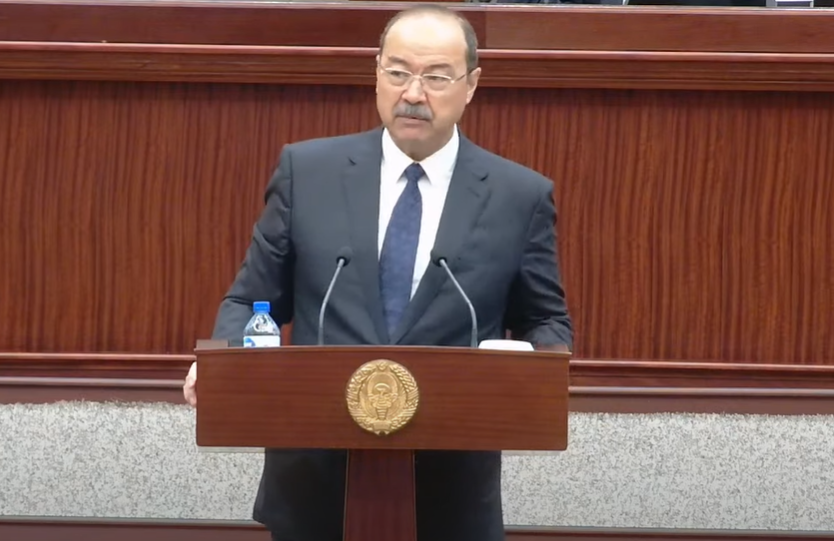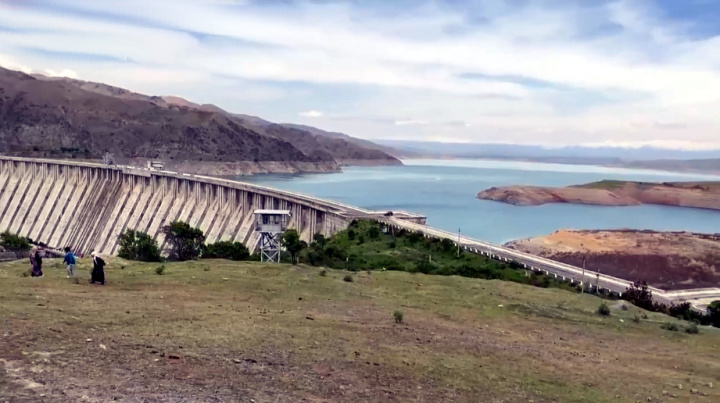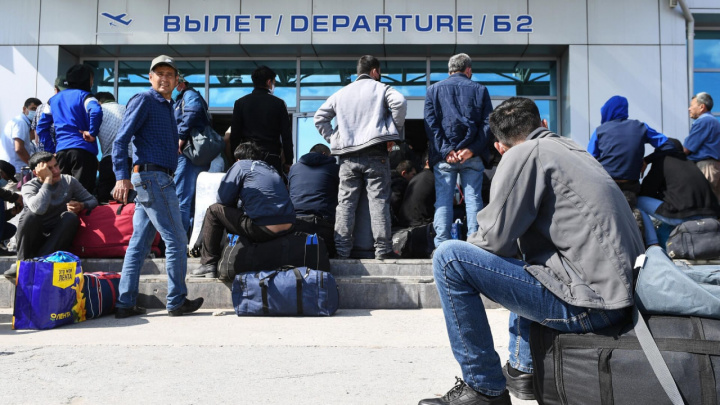PM Abdulla Aripov announces details of border agreement between Uzbekistan and Kyrgyzstan
A regular meeting of the Legislative Chamber was held. The deputies considered draft laws on the ratification of the agreement between Uzbekistan and Kyrgyzstan on certain sections of the state border, as well as the ratification of the agreement between the governments of Uzbekistan and Kyrgyzstan on the joint management of water resources of the Andijan (Kempirabad) reservoir.

Photo: senat.uz
During the meeting, Prime Minister Abdulla Aripov spoke and answered questions about the border with Kyrgyzstan.
According to the head of government, a final agreement has been reached on 35 sections – a total of 302 km of the border – that were not previously agreed with neighboring Kyrgyzstan. This issue was under negotiations for more than 5 years and came to an end.
According to him, the following land exchange is proposed: the area of the Andijan reservoir in Kyrgyzstan is 4,957 hectares. Uzbekistan proposes to transfer 1.19 thousand hectares of pastures from the Oshakhur site of the Kurgantepa district (Andijan region) instead of the reservoir.
Also, another 19 hectares of land are transferred from the territory of Kyrgyzstan to Uzbekistan to service the reservoir and dam. People of Kyrgyzstan are also allowed to use the reservoir for some purposes.
“During the times of the USSR, when the Andijan reservoir was built, Uzbekistan undertook to build a canal with a length of more than 200 kilometers from the left bank, but it was not built. Because of this, the Kyrgyz side did not develop more than 8 thousand hectares of land in the Burgandin massif. In order to compensate for these lands, it is proposed to transfer to Kyrgyzstan 12,709 hectares of pasture land from the Govasoy site in the Pap and Chust districts (Namangan region), which were previously disputed,” Abdulla Aripov said.
The Kasansay reservoir, which is the main source of irrigation for the Kasansay and Chust districts (Namangan region), is located on an area of 850 hectares in the territory of Kyrgyzstan. The reservoir is fully used for the needs of Uzbekistan. Therefore, it is proposed to allocate 477 hectares of land from the Namangan region to Kyrgyzstan as compensation. Of this, 105 hectares of land that is proposed to be separated from the Chust district make up the disputed Karakurgan massif, inhabited by citizens of Kyrgyzstan.
For 10 sections, Kyrgyzstan gives Uzbekistan 429 hectares of land, which must be settled in the demarcation process. In return, an agreement was reached on the provision of 294 hectares of land in the Valley regions of Uzbekistan.
According to the Prime Minister, a separate agreement has been reached on the Sokh district. In particular, a separate agreement will be signed between the governments to regulate the use of the Chashma spring based on the needs of the two countries.
Abdulla Aripov noted that as a result of the signing of this agreement, disputes on the border issue will be fully resolved, as well as the integrity of the borders will be ensured, and possible bloody conflicts in the border areas will be prevented.
“Removal of tension will allow restoring relations between fraternal peoples, signing of a long-term regional agreement on the use of water resources will be achieved. Also, about 8,000 farmers will be provided with a stable water supply. Transport and communication problems will be resolved, and the obligations inherited from the former land acquisition union will be fully implemented,” the head of government said.
MP Doniyor Ganiyev asked for clarification regarding the news spread on social networks about the exchange of land plots from both sides.
According to Aripov, now the Uzbek side is giving away 1,000 hectares of land for a reservoir with an area of about 5,000 hectares. The remaining land plots with an area of more than 4,000 hectares were given by Uzbekistan as compensation even under the USSR (in the 1970s).
“During the study of archival documents, it became known that during the times of the former union, Uzbekistan undertook to build more than 200 kilometers of the Kampirabad left-bank canal. Unfortunately, for various reasons, this canal was not built. In Kyrgyzstan, it has been emphasized for many years that due to the failure to fulfill this obligation, a large amount of land from 8 to 18 thousand hectares remained undeveloped. If we build this canal and additional hydraulic structures from the Andijan reservoir to the Batken region of Kyrgyzstan, large funds will be required from the budget of our republic. In addition, we have to resettle more than 20 settlements in Andijan and Fergana regions.
The saddest thing is that we may lose more than 2,000 hectares of agricultural land. Therefore, it is proposed to give in compensation about 12,700 hectares of pastures in the mountainous terrain of the Govasoy site in the Pap and Chust districts of Namangan region.
Our deputies from the Namangan region have information that 6,000 hectares of the proposed Govasoy site is a disputed territory and is actually used by citizens of Kyrgyzstan. If you count, we offer 12,700 hectares of pastures on more than 8,000 hectares of unused agricultural land. It is worth noting that at present, in practice, border discussions support the provision of 2.5 times more pastures per hectare of cultivated land. In the proposed bill, instead of 19.5 thousand hectares, the Kyrgyz side will be allocated 13 thousand 719 hectares of pasture land as compensation (previously 4 thousand 127 hectares were provided),” the Prime Minister said.
The Prime Minister said that after the completion of the bilateral processes of ratification of the agreement, separate work will be carried out in each agreed territory.
“The difference between the areas arose due to the obligations that Uzbekistan had previously assumed. We tried to quantify this difference in money, but from a material point of view, complex numbers are obtained. After the delimitation and demarcation processes, it will be necessary to establish border protection zones. According to our preliminary estimates, about 130 households are planned to be resettled. We plan to allocate compensation in the amount of about 50 billion soums. If they want, they will receive money or buy a ready-made house, no one will remain dissatisfied. This is under the personal control of the President,” Aripov said.
The deputies passed both bills in three readings, the laws will be sent to the Senate.
Recommended
List of streets and intersections being repaired in Tashkent published
SOCIETY | 19:12 / 16.05.2024
Uzbekistan's flag flies high on Oceania's tallest volcano
SOCIETY | 17:54 / 15.05.2024
New tariffs to be introduced in Tashkent public transport
SOCIETY | 14:55 / 05.05.2023
Onix and Tracker cars withdrawn from sale
BUSINESS | 10:20 / 05.05.2023
Latest news
-
Direct flight from Tashkent to the Maldives — every Sunday
SOCIETY | 09:00 / 11.07.2025
-
Hackers steal nearly 3 billion UZS from bank account in Jizzakh
SOCIETY | 19:32 / 11.07.2025
-
Uzbekistan’s gold giant NMMC doubles revenue in H1 2025, expands mining operations and sustainability efforts
BUSINESS | 19:31 / 11.07.2025
-
Uzbekistan establishes diplomatic relations with Eritrea
POLITICS | 17:46 / 11.07.2025
Related News

18:19 / 03.07.2025
Kyrgyz government approves state ownership of lands received from Uzbekistan

12:05 / 01.07.2025
Railway connecting China, Kyrgyzstan, and Uzbekistan moves into full-scale construction phase

19:29 / 28.06.2025
Russian Embassy assures travelers can skip ruID app for entry

16:05 / 25.06.2025



